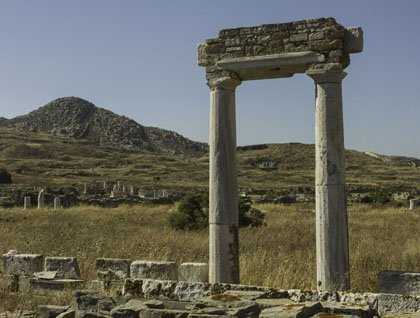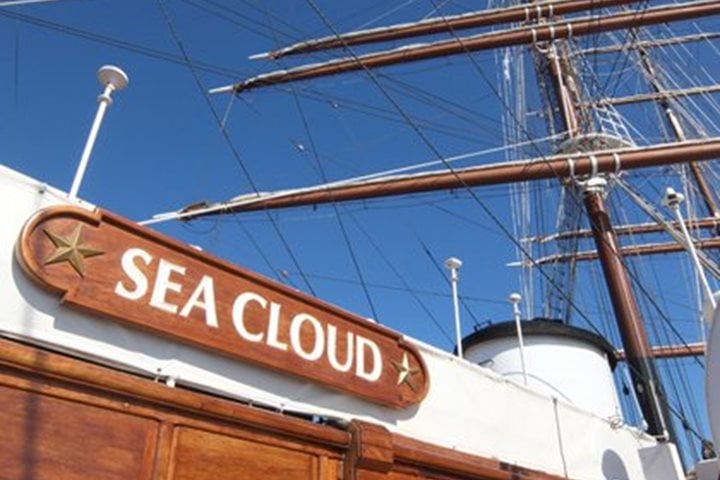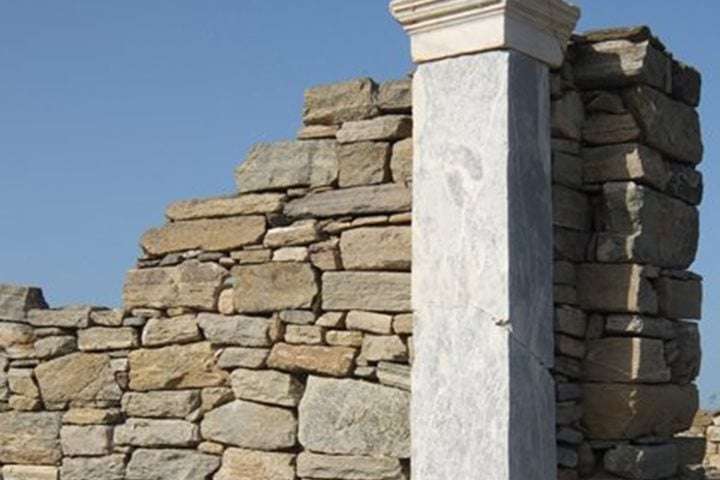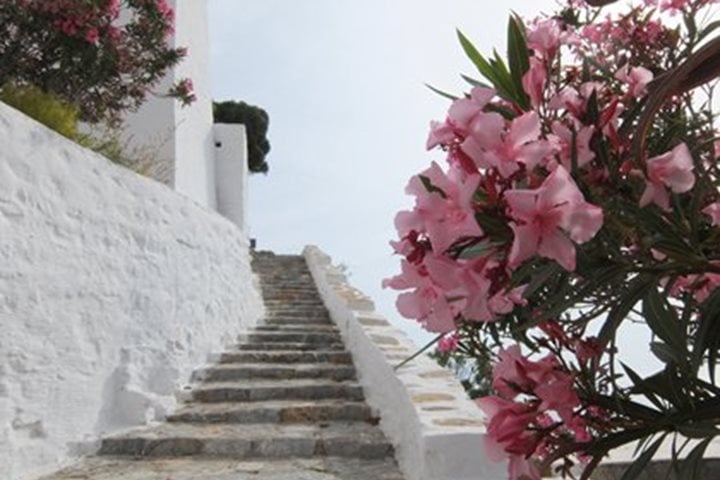The wind picked up as we sailed out of the Santorini Caldera last night. At dawn the wind was blowing pretty good at about 25 knots with gusts to 30. Delos was still an hour away, and it was exhilarating to stand on the bow and feel the power of the wind. I thought, “This is what it is like to sail on an historic vessel,” as I heard the wind whip through the lines making a low cry. The sky was blue and there was not a cloud on the horizon. The Sea Cloud rode the waves as if she were born in the sea. How exhilarating! We dropped anchor off Delos at 7:25. Our adventure is about to begin.
Our wonderful guides Stella and Effie led us on our exploration of this special uninhabited and historically crucial island. The island of Delos has been inhabited for at least 4,000 years, long before the Greeks arrived. The Ionians came here in about the year 1000 BCE and brought the legend of Apollo with them and they established the annual Delia festival here. Thus it has been considered a sacred place for 3,000 years. It is known principally for the story of the birth of Apollo and Artemis. The ancient tale says that Leto, pregnant from her affair with Zeus, was seeking a sanctuary from her jealous lover Zeus to give birth to her son and daughter, Apollo and Artemis. Zeus had the unfortunate habit of consuming his children so that he would never have any rivals. Leto gave birth to the twins at the edge of the sacred lake, Artemis, who became the chaste goddess of the hunt, being born first, followed by her twin Apollo, the god of the sun and rationality. Delos soon became a place of pilgrimage for the island Greeks and this in turn led to its becoming a bustling commercial center with a population of some 30,000 and its maximum in the 1st century BCE. Athens made Delos the center of the first Delian League, the first Athenian naval confederation in 478 making Athens the leading city-state amongst the Greeks.
Tiny Delos was quite the cosmopolitan center. One can find temples to foreign gods here, like the Temple of Isis, the important Egyptian goddess. Some 10 years or so ago I was stunned to find a carving of the Carthaginian Punic goddess Tanit, the consort of Baal Hammon and Melqart, in the floor of the “House of the Masks.”It was not that I was surprised to see her in a Greek situation but slightly surprised to see her image in a site so devoted to Apollo and Artemis. Some of our group visited the theatre built into the side of the hill leading up to the acropolis. The theatre can hold 5,000 and would have hosted plays by the great Athenian playwright tragedians Sophocles, Aeschylus, and Euripides. A hardy few of us walled up to the acropolis where there are stunning views not only of the ancient city below but also in the distance to Rineia and Mykonos. The museum on Delos, which we all visited, has some very fine Hellenistic era busts. This period the late Hellenistic saw Greek sculpture joined to the Roman penchant for realism and some of the finest busts of men and women date from this period.
Tonight was our last night together on this magical sailing odyssey in the Cyclades and Turkey. The Captain’s farewell dinner was wonderful and as always the food was superb. Our journey has been filled with so many sights and sounds and experiences I will not attempt to catalogue them. Suffice to say it is my fervent wish that years hence I can conjure up in memory the brilliant white houses of the Chora of Folegandros, the writhing horses and riders representing the great Panathenaic procession, which we see on the frieze by Pheidias, will be chief in my memory as well as a swim in the caldera of Santorini.









